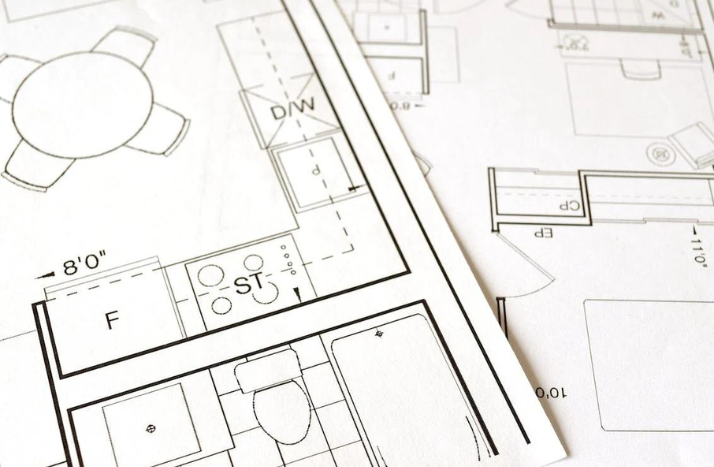
When buying, selling or renting a property, it is common to come across the terms “usable area”, also known as “computable area” or “usable area” and “constructed area”. Both measures refer to the size of a home, but there are abysmal differences between them that can affect the value of the property and its use.
Therefore, it is essential to know the distinction between these two areas to avoid confusion or misunderstandings. From Bcn Advisors we will explain in detail the difference between useful surface and constructed surface, how they are calculated and which are the elements that are included in each one of them.
What is the difference between built and useful meters?
Whether you are looking to buy or sell a house in Barcelona or in any other city in the world, we can help you find the right property for you, it is vitally important to know the relationship between usable and constructed surface area. The usable area refers to the living space of a property, i.e. the area that can be used for living or working. It includes all bedrooms, living rooms, kitchens and bathrooms.
On the other hand, the built-up area refers to the total area occupied by the building, including both the usable area and the common elements, walls, balconies, terraces, corridors, stairways and other non-habitable spaces.
This difference must be taken into account when buying or renting a property, since the price is usually calculated based on the useful surface area, not the constructed surface area. In other words, it is necessary to take into account the percentage between the usable area and the constructed area.
How is the useful surface area of a property calculated?
The usable area of a house is calculated by measuring the area of each of the rooms, adding the areas of the rooms and subtracting the areas of the structural elements and perimeter walls.
In general, the usable area of a dwelling refers to the area that can be walked on and used within the property. Therefore, it includes all bedrooms, living rooms, kitchens and bathrooms. On the other hand, elements such as perimeter walls, interior walls, balconies, terraces, storage rooms, garages, patios and other non-habitable spaces are not included in the usable area.
Formulas for calculating usable area and constructed area
There are several formulas to calculate the useful area and the constructed area of a property, depending on the rules and regulations in force in each country or region. Here are some of the most common ones:
– Usable area: the usable area can be calculated by measuring the area of each of the rooms, adding the areas of the rooms and subtracting the areas of the structural elements and perimeter walls:
Usable area = Total area – Non-habitable areas.
– Built-up area: the built-up area is calculated by adding the usable area plus the area of the common elements and non-habitable spaces, such as terraces, balconies, patios, exterior walls:
Built-up area = Usable area + Common areas + Non-habitable spaces.
How is the floor area calculated from the usable area?
To calculate the built-up area from the usable area, a buildability coefficient is used, which may vary according to local or regional regulations. This coefficient represents the maximum percentage allowed by the regulations to build on the usable area of a plot of land.
To calculate the built-up area from the usable area, the usable area is multiplied by the buildability coefficient. For example, if a house has a usable area of 100 square meters built and the buildability coefficient is 80%, the built area would be 80 square meters (100 x 0.8 = 80).
It is essential to keep in mind that this calculation may vary depending on local or regional regulations, as some places may use other factors to calculate the floor area, such as the number of floors, the maximum height allowed, among others.
Experience the epitome of urban luxury with Bcn Advisors, your premier destination for luxury apartments for sale in Barcelona, where each residence is a sanctuary of comfort and style in one of Europe’s most vibrant cities.
Elements of a house
The elements of a dwelling may vary depending on the type of dwelling, the region and the needs of the inhabitants. However, the ones we report below are usually found in most homes: bedrooms, living room, kitchen, bathroom, dining room, laundry area, balcony or terrace, hallways, storage room or storeroom, and garage or parking space.
In general, the elements of a dwelling are adapted to the needs and preferences of the inhabitants, and may vary according to the culture, lifestyle and geographical area in which the dwelling is located.
Elements considered as floor area
As mentioned above, the elements considered floor area may vary depending on local or regional regulations, but generally include the following:
1. Area of the floors of the building that are enclosed and roofed, including walls, ceilings and floors.
2. Surface area of the common areas of the building, such as corridors, stairways, elevators, lobbies, among others.
3. Surface area of exterior common areas, such as patios, gardens, swimming pool areas, among others.
4. Surface area of terraces, balconies, porches and other roofed spaces that are part of the building.
5. Surface area of structural elements, such as walls, columns, beams, among others.
6. Surface area of fixed and permanent installations, such as heating, air conditioning, plumbing and electrical systems, among others.
Elements considered as usable area
Some of the elements considered usable area in a dwelling may include: bedrooms, living room, kitchen, bathroom, dining room, laundry area, dressing rooms or closets and hallways.
Elements considered usable area in common areas
In the case of the common areas of a building, the elements considered usable area may include: lobby, hallways, stairways, elevators, gymnasiums, swimming pools and recreational areas.
Is the appraisal based on usable or constructed meters?
The appraisal of a property can be made on both the useful area and the built-up area, depending on the purpose of the appraisal and the regulations and practices of each country or region.
In some cases, the appraisal is based on the usable area of the property, since it is considered the living and functional area. This option is common when the appraisal is performed to establish a market value, in which the living area of the property is the main consideration.
In other cases, the appraisal is based on the constructed area, which includes both the usable area and the area corresponding to common elements, such as exterior walls and common use spaces. This option is common in cases where a more accurate valuation of construction costs and materials is needed, or where an appraised value needs to be established for a mortgage or mortgage loan.
Types of surfaces
There are different types of surfaces depending on their function and their relationship to the space. Here are some of them:
1. Living area
This is the usable area of a home, which is used to determine the living space of the home.
2. Built-up area
It is the total area of a building, including the living area as well as the common elements and non-habitable areas.
3. Working area
The area required to perform a specific activity, such as a work surface in an office or workshop.
4. Agricultural area
The area used for the production of agricultural crops.
5. Forested area
It is the area of land that is covered by forests or forest stands.
How are other elements counted? Terraces, built-in closets…
Additional elements of a dwelling, such as terraces, balconies, built-in closets, among others, can be considered as usable area or built-up area, depending on their location and function within the dwelling.
For example, a terrace that is covered and closed, and that is integrated as an extension of the dwelling, can be considered as useful surface. On the other hand, an uncovered terrace or balcony that is not integrated as part of the dwelling will not be counted as usable area.
In the case of built-in closets, if they are built into a wall, they can be considered as part of the usable area. However, if they are free-standing cabinets, which can be moved, they will not be counted as usable floor space.
It is essential to keep in mind that the regulations and practices of each country or region may vary as to how these additional elements are counted in the useful or constructed surface area of a home, so it is advisable to have the help of a professional to determine the surface area of a home accurately.



 The new capital gains tax in Spain
The new capital gains tax in Spain
 Top International Companies in Barcelona
Top International Companies in Barcelona
 Best real estate agency in Barcelona: How to choose it?
Best real estate agency in Barcelona: How to choose it?
